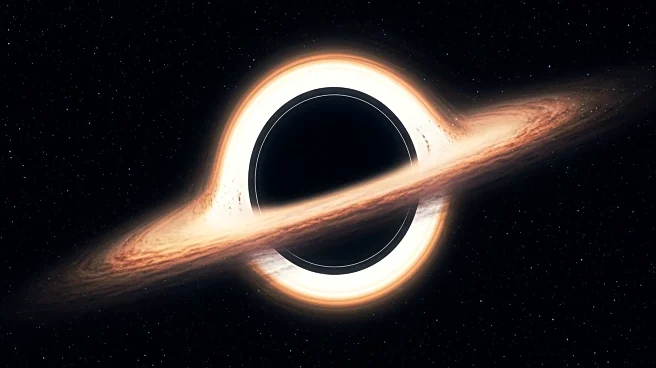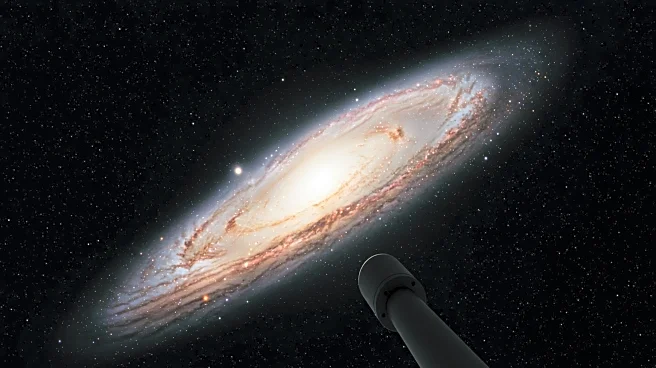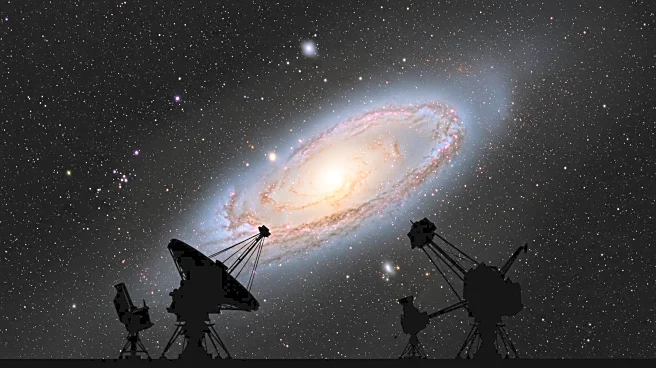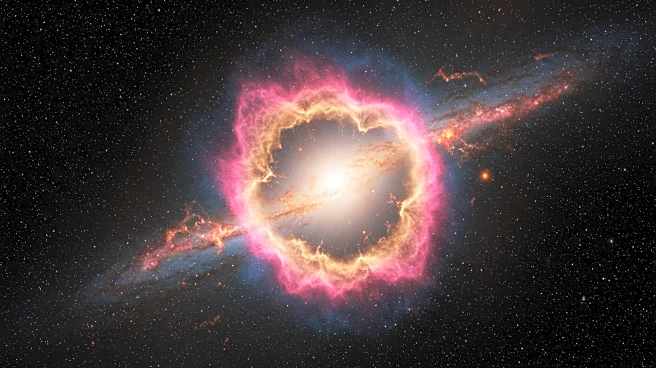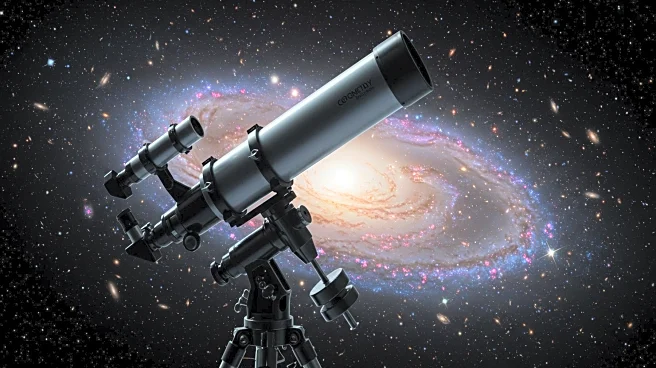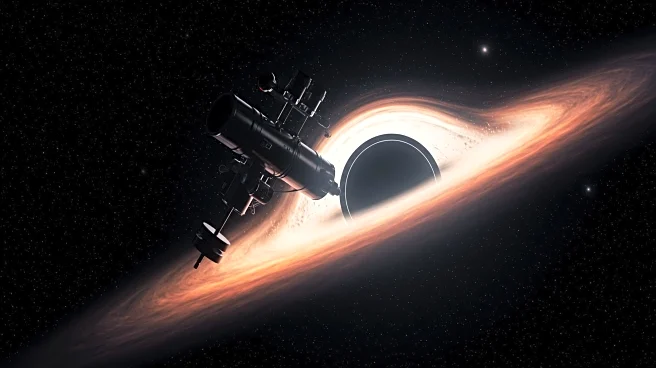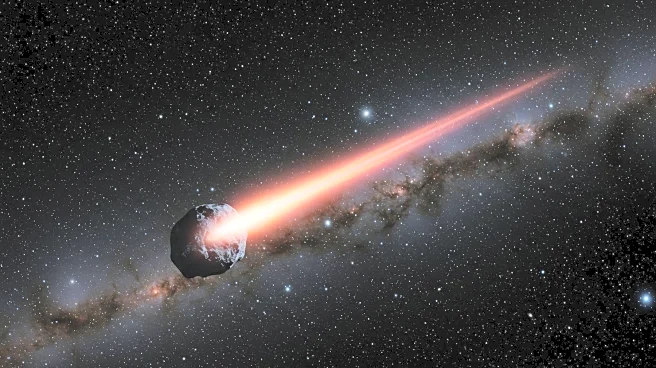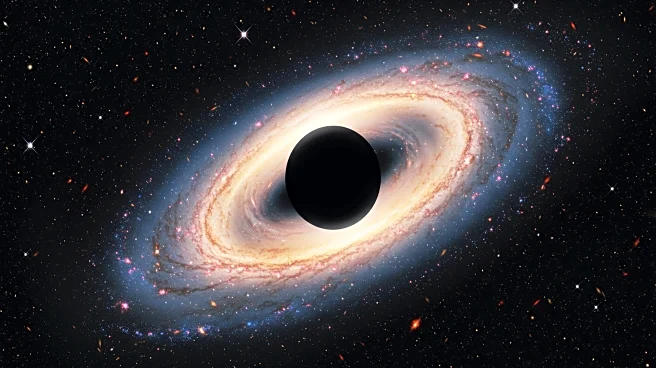Rapid Read • 7 min read
Astronomers have identified a distant galaxy, CAPERS-LRD-z9, which hosts a growing supermassive black hole. This galaxy, observed by the James Webb Space Telescope, dates back to when the universe was approximately half a billion years old. The discovery was made through the Public Release IMaging for Extragalactic Research survey and further analyzed using the CANDELS-Area Prism Epoch of Reionization Survey. The galaxy's redshift is determined to be z = 9.288, indicating its ancient origins. The presence of broad emission lines from hydrogen gas suggests the existence of an active galactic nucleus, marking CAPERS-LRD-z9 as the most distant object known to exhibit such characteristics.
AD
This discovery provides valuable insights into the growth of black holes in the early universe, challenging existing theories about their formation and evolution. Understanding how black holes can reach millions of solar masses in a relatively short cosmic timeframe is crucial for astrophysics. The findings suggest that black holes may grow from massive seeds or through super-Eddington accretion rates, offering new perspectives on cosmic development. The study of CAPERS-LRD-z9 contributes to the broader understanding of galaxy formation and the role of black holes in shaping the universe.
Further research will focus on exploring the mechanisms behind the rapid growth of black holes in the early universe. Additional observations using the James Webb Space Telescope and other instruments may uncover more distant galaxies with similar characteristics. The findings could lead to revisions in theoretical models of black hole formation and growth, influencing future studies in cosmology and astrophysics.
AD
More Stories You Might Enjoy
